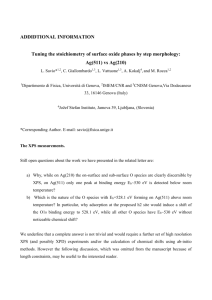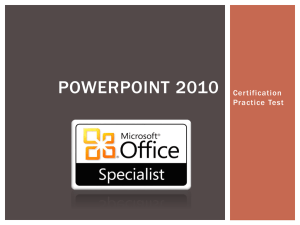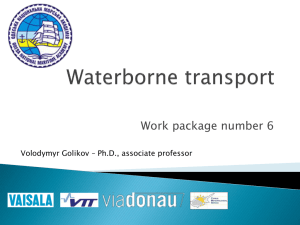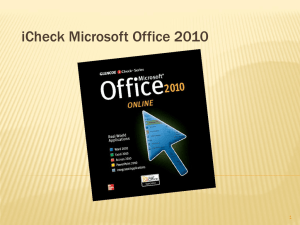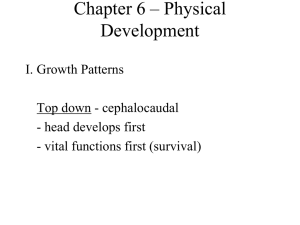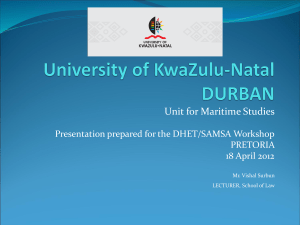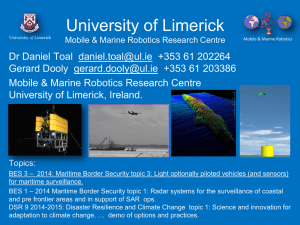Motorways of the Sea
advertisement
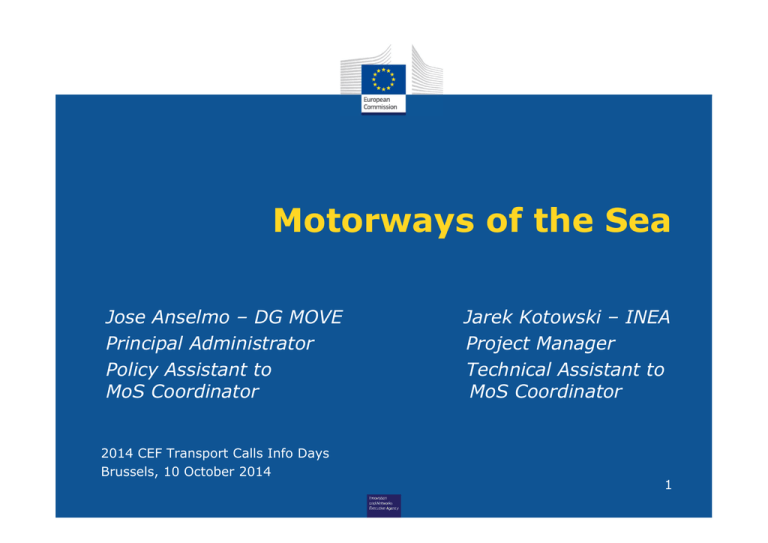
Motorways of the Sea Jose Anselmo – DG MOVE Principal Administrator Policy Assistant to MoS Coordinator 2014 CEF Transport Calls Info Days Brussels, 10 October 2014 Jarek Kotowski – INEA Project Manager Technical Assistant to MoS Coordinator 1 Motorways of the Sea: overall objective Establish a trans-European network of Motorways of the Sea that concentrates flows of freight on viable, regular, and reliable sea-based transport services that are integrated in logistic chains and covers all types of maritime freight operations in order to… • • • • reduce land transport congestion increase use of more sustainable modes of transport increase transport efficiency and effectiveness improve accessibility to peripheral regions 2 Motorways of the Sea: objective II • • MoS as the maritime leg of the Core Network Corridors and beyond Serving: • Connecting the Corridors to Third Countries Overseas - Mediterranean - Black Sea - Atlantic - EU Internal Trade (40%) - EU External Trade (75%) Connecting European Hinterland to Third Countries Hinterland 3 Motorways of the Sea: Priorities 1. Environment 2. Integration of maritime transport in the Logistics chain 3. Maritime Safety, Traffic Management, Human Element/Training 4 MoS technical areas Priority 1 - Environment • • • • Promote general sustainability and safety Contribute to “Climate Change” solutions Foster the deployment of new technologies and systems Meet international and European Regulations - MARPOL Annex VI - Sulphur Directive HOW? by supporting technical solutions e.g. LNG + methanol + scrubbers etc. 5 MoS technical areas Priority 2 – Integration of maritime transport in the logistics chain • • • • • Strengthen Cohesion Improve existing or establish new maritime links Improve maritime transport integration in the global logistics chain Improve transhipment and hinterland connections in ports Improve multimodal connections – priority for the integration of inland navigation and rail 6 Mos technical areas priority 3 – safety, traffic management, human element/training • • • • • Promote general sustainability and safety Strengthen cohesion Develop more efficient traffic and transport management systems Foster the deployment of new technologies and systems Optimise processes, procedures and the human element, e.g. simulation networks, long distance training, knowledge networks 7 Specific features of MoS • Multi-beneficiary (public and private): European Economic Interest Groupings recommended • Multinational (at least two Member States involved) • Intermodal with incorporation of maritime leg • Focus on transport network integration 8 CEF co-financing for MoS • 30% for infrastructure works and facilities (implementation projects) • 50% for: - entire studies study parts of implementation projects pilot activities of studies • Up to 85% for all types of projects in Cohesion countries 9 MoS call characteristics • Budget: €250 million + €100 million for Cohesion Countries (dedicated call) • Call priorities: - alternative fuels, emission abatement technologies and on-shore power supply upgrading or establishing new MoS links safety of maritime transport 10 MoS call: key actions (1) Development of MoS links (works) 1 Core port, 1 Comprehensive port and 1 maritime operator involvement as minimum - only dedicated lines serving the applicant ports - upgrades on vessels limited to the additional efforts for environmental purposes or ancillary superstructure - ships to remain in EU for 5 years after end of project • Various investments in ports (incl. superstructure) correlated with the maritime service, necessary to remove bottlenecks or to improve efficiency of the logistic chain on a Corridor • Intermodal dimension with extension of the service to hinterland preferred 11 Involvement of transport operators (and other stakeholders) • • • • Direct as project beneficiary, no letter needed Indirect through letters of support/intent streamlining the operator’s credible commitment to the project Recommended letter structure: - role of operator in the project organisational involvement (e.g. steering committee) co-operation with other beneficiaries technical involvement (service operation) financial capacity to operate service Possibility to co-finance costs of organisational involvement with a 50% rate 12 What can MoS fund within implementation projects? • • • • • • High water protection devices (dikes, breakwaters, locks) Lights, buoys, beacons; ramps, jetties, signposting Infrastructure and facilities up to the terminal site (for temporary storage of loading units, facilities for drivers, shore side electricity, & waste treatment; terminal handling equipment…) Land and sea access to port, including connecting links to the TEN-T or national land transport networks ICT infrastructure for eMaritime, administration and customs facilities (VTMIS, reporting and information exchange systems, administrative simplification), etc. Waterways and canals to shorten sea routes 13 MoS call: key actions (2) • Wider benefit actions Addressing regional or EU needs (e.g. coherent investments in a group of ports for LNG filling stations or coherent set of design studies for that purpose, icebreaking operations) • Studies Mature type of actions with EU added value and leading to implementation (no feasibility or market studies) or policy development • Pilot actions: - Projects testing or deploying new technological solutions in operational conditions or market uptake of such solutions - Particular conditions apply 14 Specific requirements for pilot actions in CEF - testing or deploying new technological solutions in real operational conditions - solutions not sufficiently present in today’s market and therefore experience needed for - future large scale implementation added value at limited scale and at a reasonable price dissemination of results needed no R&D no deployment of commercial network limited number of pilot actions to be financed per sector (critical mass principle) a detailed analysis of the data and lessons learned in terms of long term feasibility, including the feasibility of wider deployment of innovative activities key performance indicators, to be defined in advance to allow estimating positive impact 15 MoS eligibility reminders • All types of projects must include applicants from (and be supported by) a minimum of two different Member States • Project extension to a neighbouring non-EU country requires additional governmental endorsement from that country and the Member State(s) concerned (participation of that third country possible in studies only) 16 More information INEA website http://inea.ec.europa.eu/en/cef/cef_transport/ cef_transport_-_motorways_of_the_sea.htm 17 Thank you for your attention!

